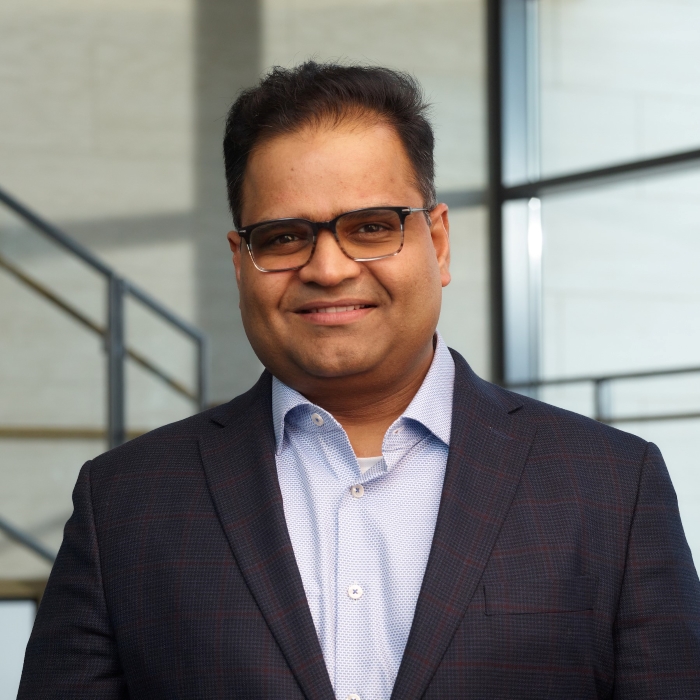

Science & Innovation
R&D Spotlight: World Narcolepsy Day
By Craig Hopkinson, M.D., Executive Vice President of R&D and Chief Medical Officer
Learning From Patients About the Burden and Unmet Needs in Narcolepsy
Narcolepsy is often misunderstood, with persistent stigma surrounding this and other sleep disorders. Incorrectly dismissed as “sleepiness,” narcolepsy is a chronic neurological condition impacting up to an estimated 170,000 people in the United States1 that impairs regulation of the sleep-wake cycle and takes an immense toll on daily life. The journey to diagnosis can be long and can be marked by skepticism from authority figures and low self-esteem2 before finally reaching an accurate answer.
As we recognize World Narcolepsy Day, we join the sleep community in efforts to raise awareness and end common misperceptions about this disease. One way we do this is by gathering insights directly from people living with narcolepsy to better understand the substantial and often untold burden narcolepsy and its symptoms place on many facets of life – physical, emotional, social, professional, and financial – even after diagnosis and treatment.
Earlier this month, Alkermes presented new findings at the 36th Annual Psych Congress from recent patient interviews evaluating the diagnosis journey and symptoms of people living with narcolepsy (type 1 [NT1], n=12; type 2 [NT2], n=10).3 The results highlight common symptoms of the disease and underscore patients’ unique journeys to diagnosis.
Across both narcolepsy types interviewed in our study, many participants (50% for NT1 and 60% for NT2) reported receiving their narcolepsy diagnosis at least 10 years or longer after they first began experiencing symptoms. Many were misdiagnosed at least once during that time, receiving diagnoses including depression, sleep apnea, and attention-deficit/hyperactivity disorder (ADHD). Patients also reported visiting several different types of healthcare professionals while seeking a diagnosis, including sleep specialists, neurologists, pulmonologists, psychiatrists and primary care physicians.3
The three most commonly reported narcolepsy symptoms across these interviews included excessive daytime sleepiness, cognitive impairment, and fatigue. While excessive daytime sleepiness and fatigue are commonly associated with the public perception of narcolepsy, cognitive and mental symptoms receive less recognition but can be just as taxing. These include brain fog, difficulty concentrating, memory loss and hallucinations.4
Consistent with the diagnostic criteria, all interview participants with NT1 reported cataplexy – a sudden, spontaneous, and temporary loss of muscle tone, commonly triggered by strong emotions or reactions such as laughter, anger, stress and surprise.5
The road to a narcolepsy diagnosis can be long and frustrating, often spanning many years and visits to several specialists, with delays and misdiagnoses more common than not. Many people may remain undiagnosed due to low awareness about the disorder among both patients and healthcare providers.2
At Alkermes, we believe that better representation and advocacy for people living with narcolepsy can help increase acceptance and understanding of the burden caused by this and other sleep disorders. We’re integrating these real-world accounts and patient insights into our clinical development process as we continue our commitment to improving care for and understanding the unique needs of people living with psychiatric and neurological disorders – including narcolepsy.
References:
1 Cohen, A., Mandrekar, J., St Louis, E. K., Silber, M. H., & Kotagal, S. (2018). Comorbidities in a community sample of narcolepsy. Sleep medicine, 43, 14–18. https://doi.org/10.1016/j.sleep.2017.11.1125
2 Flygare J, Parthasarathy S. Narcolepsy: let the patient's voice awaken us! Am J Med. 2015 Jan;128(1):10-3. doi: 10.1016/j.amjmed.2014.05.037. Epub 2014 Jun 12. PMID: 24931392; PMCID: PMC4264987.
3 Doane, M.J, et. Al., Diagnosis and Symptoms of Narcolepsy from the Patient Perspective: Results from In-Depth Qualitative Interviews. Poster presented at: Psych Congress; Sept. 6-10, 2023; Nashville.
4 Goswami, M., Thorpy, M.J., & Pandi-Perumal, S.R. (2016). Narcolepsy: A Clinical Guide, 2nd Edition. Springer International Publishing.
5 Sateia MJ. International classification of sleep disorders. Chest. 2014;146(5):1387-1394.
Related Stories

Celebrating Women & Girls in Science
Laura Tan reflects on her career journey and the importance of creating opportunities for women in STEM.

World Sleep Day 2024: The Importance of Lived Experience
Bhaskar Rege, Ph.D. on the importance of elevating the patient voice this World Sleep Day and beyond.

Honoring Diversity at Alkermes as We Further Our Work in Neuroscience
Renato Chiarella on the importance of embedding diversity, inclusion and belonging into our R&D work.

Last updated: September 2023
